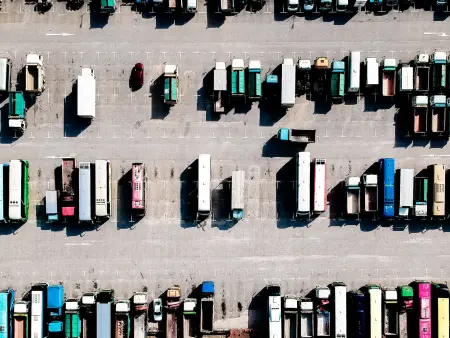Having a commercial driver’s license or CDL is one of the basic requirements for those who intend to drive large and heavy vehicles. This license is required throughout the U.S., and many employers look for a CDL as one of the minimum requirements before hiring a driver. Jansson, an agent of Landstar, has shared more details about the different types of CDL licenses for those who are interested in getting one. Keep reading to learn more.
What Is a Commercial Driver’s License or CDL?
A CDL is more than a regular driver’s license. According to the Department of Transport, a CDL is required for those who drive heavy buses and trucks, whether they operate in interstate, intrastate, and foreign territories. To obtain a CDL, drivers must pass tests and standards set by each state.
CDL Types
Currently, there are three types of CDLs: Class A, Class B, and Class C.
Class A CDL
A Class A CDL is reserved for those who drive vehicles weighing 26,001 pounds or more. This includes tow units. Some of the vehicles that require Class A CDL are tractor-trailers, flatbeds, and livestock carriers.
Class B CDL
Class B CDL is similar to Class A in that drivers are allowed to drive vehicles above 26,000 pounds. However, Class B is limited to single vehicles. Drivers with this license may also tow a vehicle not heavier than 10,000 pounds. The vehicles belonging to this classification include straight trucks, passenger buses, and dump trucks with small trailers.
Class C CDL
If a driver needs to operate a vehicle that doesn’t meet the requirements of either Class A or Class B, they can apply for Class C CDL. Those who have this license can operate vehicles carrying 16 or more passengers and combination vehicles that do not meet the weight threshold of A and B. In addition, carrying a Class C CDL allows a driver to drive vehicles with hazardous materials.
Endorsements
With an endorsement, drivers can operate a few types of vehicles that don’t belong to their CDL class. Here are some of the more common endorsements:
- T Endorsement: For towing double or triple trailers
- H Endorsement: For driving vehicles with placarded hazardous materials
- N Endorsement: For driving tank vehicles carrying gas or liquids
Testing and Training Requirements
Before a driver earns any type of CDL license, they must first pass the training and testing requirements. These differ from state to state. In general, the requirements include:
- Possessing a Commercial Learner’s Permit (CLP) 14 days before taking the skills test
- Skills testing (pre-trip inspection tests, road tests, vehicle control tests, etc.)
- Written tests
- Endorsement tests
Renewal and Maintenance
The process for renewing a CDL license differs from state to state. In general, you need to submit a few requirements like your old license and proof of identity. Some states will also require additional exams, like a vision test.
Potential Career Opportunities
Class A CDL offers the highest pay and career opportunities compared to the other classes. That’s because vehicles under Class A are part of the most profitable sectors of trucking and transport agencies. However, the higher compensation also translates to more expensive training and licensing fees.
Final Thoughts on CDLs
A CDL comes in three types, Class A, B, and C. Each classification allows drivers to operate certain types of vehicles. Before obtaining one, drivers must first pass the requirements and tests required by each state. For more information about CDL licenses and shipping solutions, turn to Jansson, a Landstar agent.




